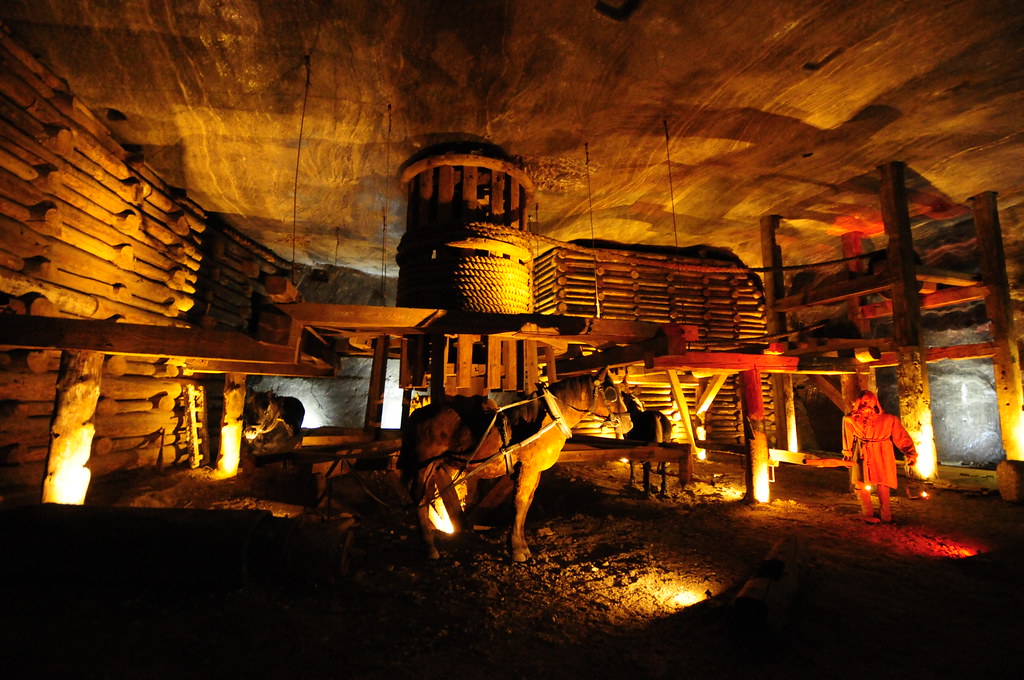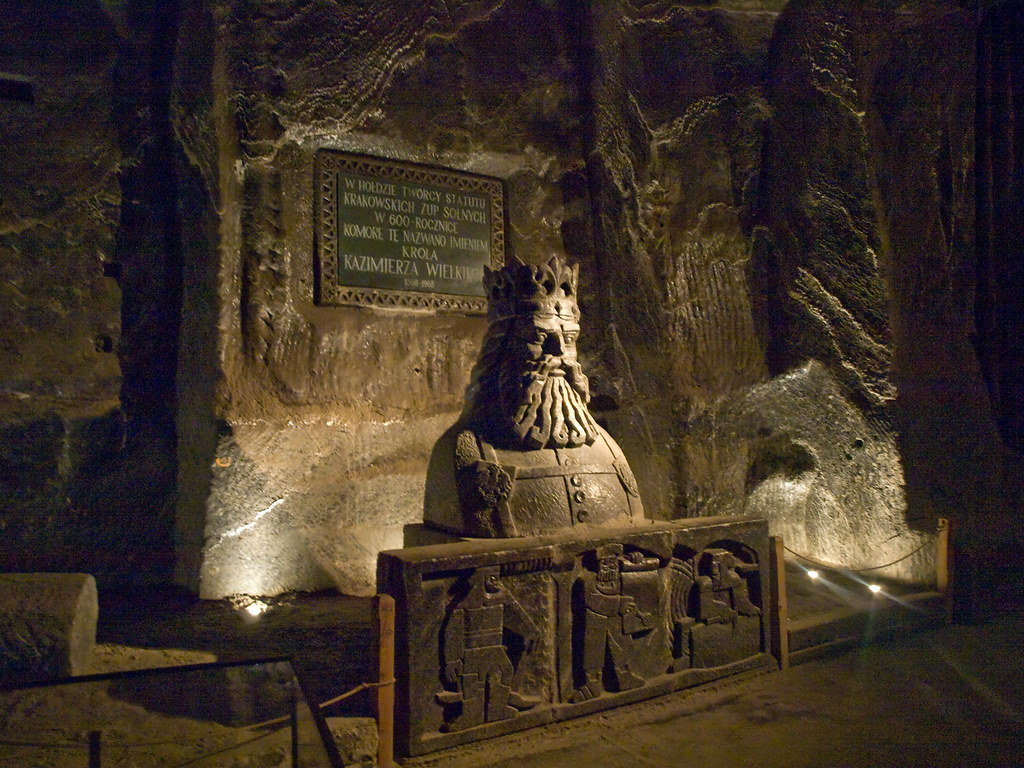1.
Photograph by Michal Osmenda
2.
Photograph by ~dgies on Flickr
3.
Photograph by teachandlearn on Flickr
4.
Photograph by teachandlearn on Flickr
5.
Photograph by Aaron Metcalfe on Flickr
The Wieliczka salt mine reaches a depth of 327 metres (1,073 ft) and is over 287 kilometres (178 mi) long. The rock salt is naturally gray in various shades, resembling unpolished granite rather than the white or crystalline look that many visitors may expect. During World War II, the shafts were used by the occupying Germans as an ad-hoc facility for various war-related industries. The mine features an underground lake; and the new exhibits on the history of salt mining, as well as a 3.5 kilometres (2.2 mi) touring route (less than 2% of the length of the mine's passages) that includes historic statues and mythical figures carved out of rock salt in distant past. [Source]
6.
Photograph by Dino Quinzani (Il conte di Luna on Flickr)
7.
Photograph by teachandlearn on Flickr
8.
Photograph by teachandlearn on Flickr
9.
Photograph by Andrzej G | Fotopolska.eu
10.
Photograph by Jonas MÃ¥nsson (Gauss2 on Flickr)
A wooden staircase with 378 steps provides access to the 64 metres (210 ft) level of the mine. There is a 3 kilometres (1.9 mi) tour of the mine's corridors, chapels, statues and lake, 135 metres (443 ft) underground. An elevator provides access to the surface. The elevator holds 36 people (nine per car) and takes some 30 seconds to reach the surface. [Source]
11.
Photograph by teachandlearn on Flickr
12.
Photograph by Adam Kumiszcza on Wikimedia Commons
13.
Photograph by Adam Kumiszcza on Wikimedia Commons
14.
Photograph by Ukko.de on Wikimedia Commons
15.
Photograph by teachandlearn on Flickr
The salt deposit in Wieliczka formed in the Miocene Epoch, 13.6 million years ago. In the rift located in their foreground, known as the pre-Carpathian basin, a huge sea was formed. Various types of rock sedimented in the reservoir, rock salt layers formed as well. Salt deposits formed in many parts of this huge reservoir. The Wieliczka deposit formed over the period of approximately twenty thousand years. It owes its final shape to the orogeny which resulted in accumulation of salt deposits causing a several-fold increase in their original thickness. [Source]
16.
Photograph by teachandlearn on Flickr
17.
Photograph by Kriskros on Wikimedia Commons
18.
Photograph by steve_w on Flickr
19.
Photograph by Matthew.kowal on Wikimedia Commons
20.
Photograph by Rocker1984 on Wikimedia Commons
21.
Photograph via wieliczka-saltmine.com/
22.
Photograph via wieliczka-saltmine.com/
23.
Photograph via wieliczka-saltmine.com/
24.
Photograph via wieliczka-saltmine.com/
25.
Photograph via wieliczka-saltmine.com/





































No comments:
Post a Comment